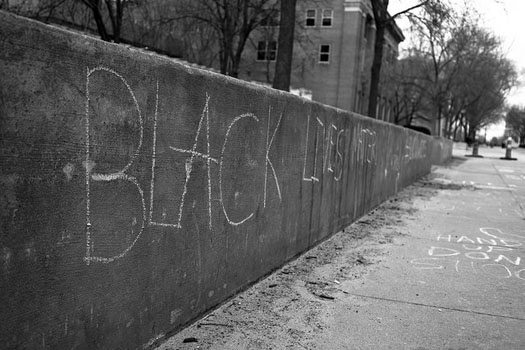
June 25, 2017; Washington Post and North Star News Today
The visibility of the problem of police violence against Black people has, over the last few years, been illuminated by grassroots organizing. These groups have spotlighted the fact that no cohesive government systems are in place to track the profiles of those who had been shot by law enforcement or the resolution of any measures taken against the shooters. This has since been remediated at least in part, as reported here, where a database started by the Washington Post reveals that black men were seven times as likely as whites to be killed by police gunfire. (Over the last few years, we have also run stories on the disproportionate shootings of people with disabilities and Native American people.) Thus, understanding and documenting race based violence against black people in this country becomes enormously important. Jonathan Capeheart, writing for the Post, reports that Bryan Stevenson of the Equal Justice Initiative had this to say:
“The narrative of white supremacy, the narrative of racial difference that was used by people to legitimate and sustain slavery was not addressed by the 13th Amendment.” Stevenson said. Also, the communities that participated in lynchings never “had to feel shame about their history of lynching.” Because of that, lynchings went “indoors” after pressure finally succeeded in stopping such public displays of violence, Stevenson said. “They started trying people inside and they had the same kind of unreliable verdicts and the same kind of death sentencing and the same kind of abuse of people of color in the courtroom that existed outside the courthouse during the lynching era.”
“The second thing is that, when you live in a country where this history has been unchallenged and where you don’t actually talk about it, the shame quotient remains pretty low,” Stevenson continued. “We can’t get to liberation without some acknowledgement of the wrong…until we do that, we’re gonna practice this denial tactic, this silence tactic, when young African Americans, who are unarmed, are shot and killed by the police.”
A new, interactive search engine called “Lynching in America: Confronting the Legacy of Terrorism” seeks to spark a national conversation about our troubled history of racial injustice.
The project, which is led by the Alabama-based nonprofit Equal Justice Initiative (EJI) in partnership with Google, seeks to “better understand the implications of our past for addressing the challenges of the present” in order to advance collective and equal justice. The site chronicles how lynching emerged as “a vicious tool of racial control to reestablish white supremacy and suppress black civil rights,” after slavery was abolished.
Sign up for our free newsletters
Subscribe to NPQ's newsletters to have our top stories delivered directly to your inbox.
By signing up, you agree to our privacy policy and terms of use, and to receive messages from NPQ and our partners.
The site contains videos, a high school lesson plan, and reports on an in-depth study by EJI that revealed
Between 1877 and 1950, 3,959 blacks were lynched in 12 Southern States, 800 more than previously reported. The states were Alabama, Arkansas, Florida, Georgia, Kentucky, Louisiana, Mississippi, North Carolina, South Carolina, Tennessee, Texas, and Virginia.
Attaching numbers and stories to the lynching of black men, women, and children throughout the United States humanizes the impact of this gruesome, racialized, social control technique.
Toward the end of the life of Michel Foucault, leading philosopher on power, in the 1980s, he wrote about biopower, the literal control over the bodies of other(ed) people. In “Right of Death and Power over Life,” the last chapter of The Will to Knowledge, he wrote, “One of the characteristic privileges of sovereign power was the right to decide life and death.” It is the ultimate show of domination power.
Rather than following linear progress, social change is spiral, which opponents seek to flatten into a circle by seeking to repeat the past. In these cases, the unapologetic use of extreme forms of power—direct power over life—reappear. As covered in a recent NPQ article on Google data, an analysis of U.S. Google searches in the U.S. during the last election found a high level of racial hatred that started during Obama’s presidency. An article in Northstar News Today via New America Media, describing the “Lynching in America” project, writes, “Recent discoveries of hangman’s nooses at or near the National Museum of African American History and Culture in Washington, D.C., has shown that lynching blacks is still very much in the minds of many whites.”
Nonprofits have our work cut out for us. In addition to defending basic rights and public services, there is also work to do at the level of stories and symbols. This project may help us by reminding us what our national shadow looks like, and how it can emerge at any time, murderous and unreasonable.—Cyndi Suarez










